I’ve been so enamored with this Whipped Labné with feta, radishes, and herbs from Kubri in Paris that I not only went back twice in two weeks to have it, but I invited myself back a third time to have Cheffe/owner Rita Higgins show me—and you—how to make it in the kitchen of her wonderful restaurant.
Happily, she accepted and we had a great time putting it together, then eating it. It’s a simple mélange of labneh, a fresh “cheese” that’s easily made at home, olive oil, and feta. Or you can buy labneh in Middle Eastern grocers or well-stocked supermarkets. As with most professional recipes, this one was also in metrics, which our friends in America have yet to fully adopt. While books have been written about why, as a cookbook author who writes in both measurements, I don’t mind cooking in either. But converting recipes takes time, and life would be easier if the American government just sent everyone a baking scale. Any candidate who puts that on their platform gets my vote.
Because no one in the government listens to me (if they did, things would be a lot different…), I urge you to take it upon yourself to buy one, since everyone likes to talk about liberté. That way I can get recipes to you faster, such as this one, which took a few days longer than expected. But I promise it’s worth the wait.
This whipped labneh is very easy to make at home, and although it doesn’t brag about it, it only requires four ingredients, and you can decide on the rest, varying the herbs, and including any grilled vegetables you want in or around it, or leave them out. Parsley, fresh mint, oregano, and/or dill can be used, or another favorite soft, aromatic herb — marjoram, sage, tarragon, etc. — can be torn or coarsely chopped and scattered over the top. The radishes add a pleasing crunch, and a dribble of good olive oil over the top makes it even more delicious when scooped up with pita bread or crackers. If you saw us make it in the video (above), the black olives really should be in the required-ingredient category.
To be honest, Romain and I have been eating this every day for a week. Rita often adds charred broccolini to it, folding some pieces into the mix, but when summer rolls around, I could imagine this being excellent served with fresh cherry tomatoes scattered around it.
And although all you need is a bowl, a spatula or a spoon, and a whisk, I got out my stand mixer to finish the job because I’d just finished an online Pilates class and my arms were tired from doing planks.
This will keep for several days in the refrigerator. It’s great for picnics or as a first course at home, or as a side with roasted or grilled chicken, fish, meat, or vegetables. It’s going on permanent rotation this spring, and likely into the summer, around here, and whether you make it with metrics, or measuring cups, I think you’ll like it too.
Whipped Labneh
About 8 to 10 servings
From a recipe by Rita Higgins, from Kubri restaurant in Paris
You can vary this by mixing in charred bits of broccolini or broccoli, or fennel, or surrounding it with room-temperature chunks of roasted winter squash. If you want to be extra creative, garnish it with pomegranate seeds, dried barberries, pistachios, za’atar, or a dusting of sumac. In the summer, try it with cherry tomatoes, although it’s nice just on its own served with flatbread or crackers. When I was in Lebanon, some people used cabbage leaves for scooping up salads and dips, which is a great alternative to those who are gluten-free.
Rita’s recipe called for 250 grams of feta, which is 9 ounces, but in the United States, feta is sold in 8-ounce packages, so I gave a range of both. If you’re a stickler for details, you could buy an extra package of feta for that extra ounce…or just use a little less labneh.
This recipe makes a good amount, but it’ll keep for at least 4 days in the refrigerator. You could also cut the recipe in half.
450g labneh (2 cups, 16 ounces) store-bought or homemade labneh
250g (8 to 9 ounces) finely crumbled feta cheese
90g (6 tablespoons) extra-virgin olive oil
4-5 cloves of garlic, peeled and minced or grated on a Microplane-style zester
Soft, aromatic fresh herbs
Pitted black olives, very coarsely chopped
Radishes
In a medium-large bowl, stir together the labneh, olive oil, and garlic.
Sprinkle the crumbled feta over the top and mash it in with a spoon or silicone spatula until the mixture is almost completely smooth, with just a few little chunks of feta here and there when you taste it.
Using a sturdy whisk, whip the mixture with gusto until it’s a little aerated and smoother. Or scrape the mixture into the bowl of a stand mixer fitted with the whip attachment and whip on high speed for 30 seconds until smooth and a little aerated. Taste and add a bit of salt, if desired.
Garnish with radishes — if small, you can use them whole; if larger, cut in half lengthwise, and radishes and herbs. Drizzle with olive oil.
Kubri
108 rue Amelot (11th)
Tél: 01 71 27 43 71
Follow Kubri and Rita Higgins on Instagram.
This post is for all subscribers. Thanks for subscribing!




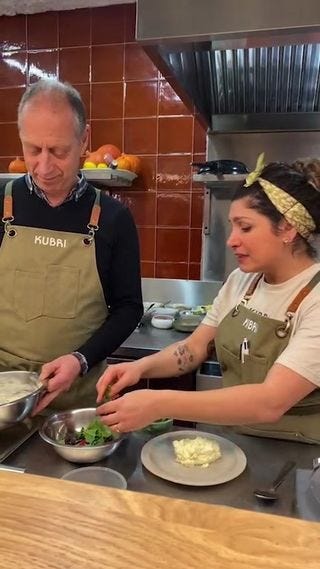
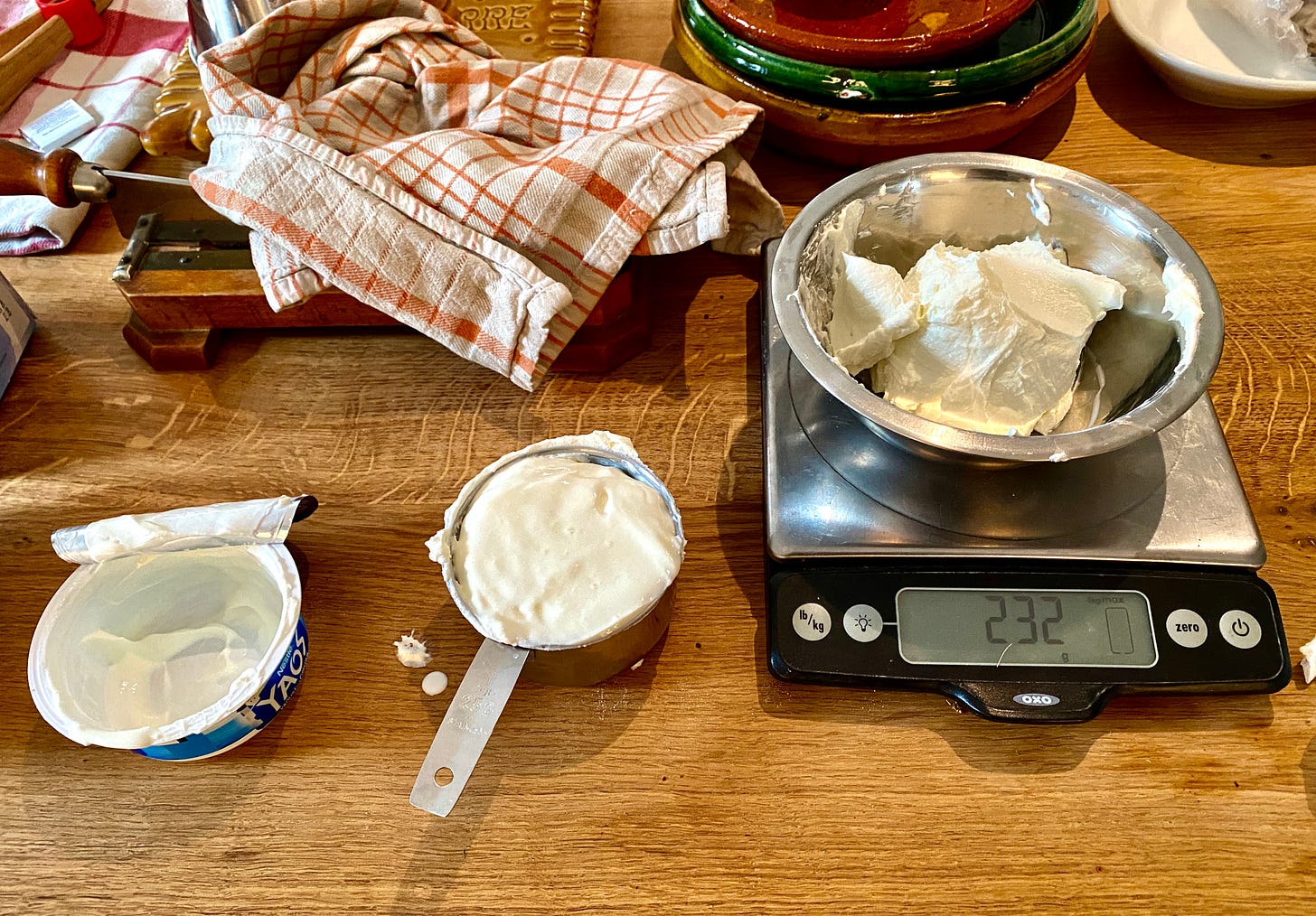
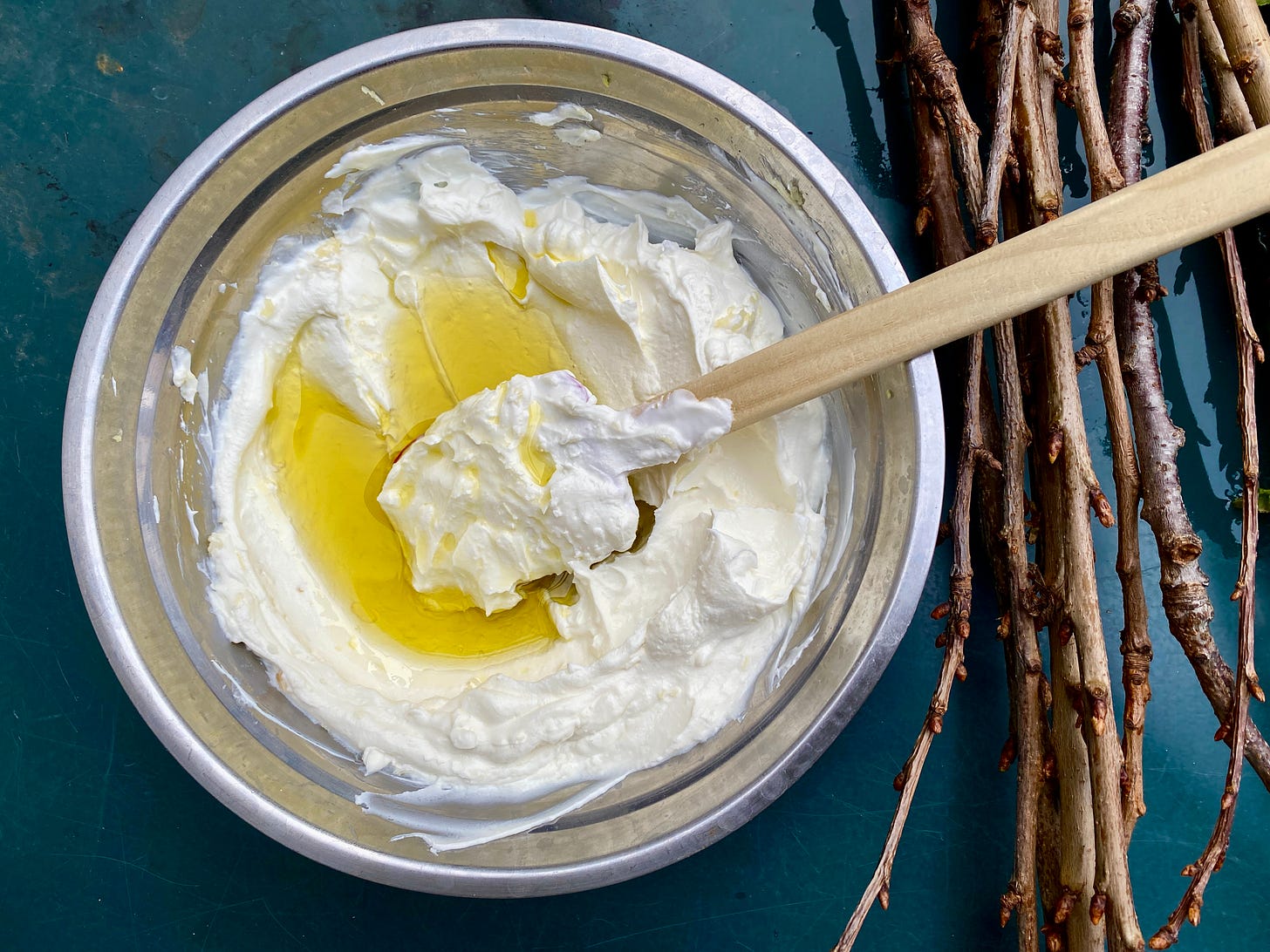
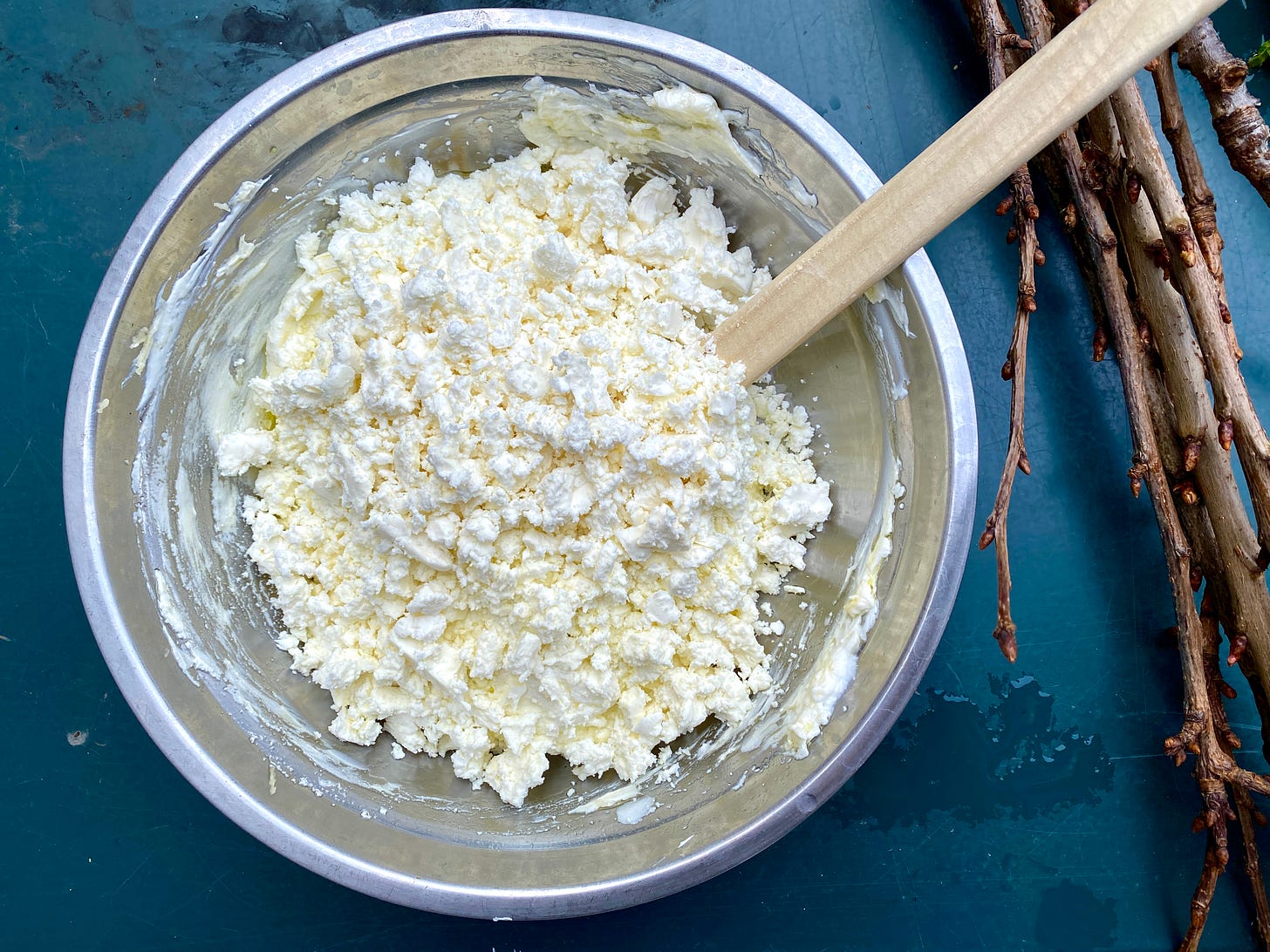


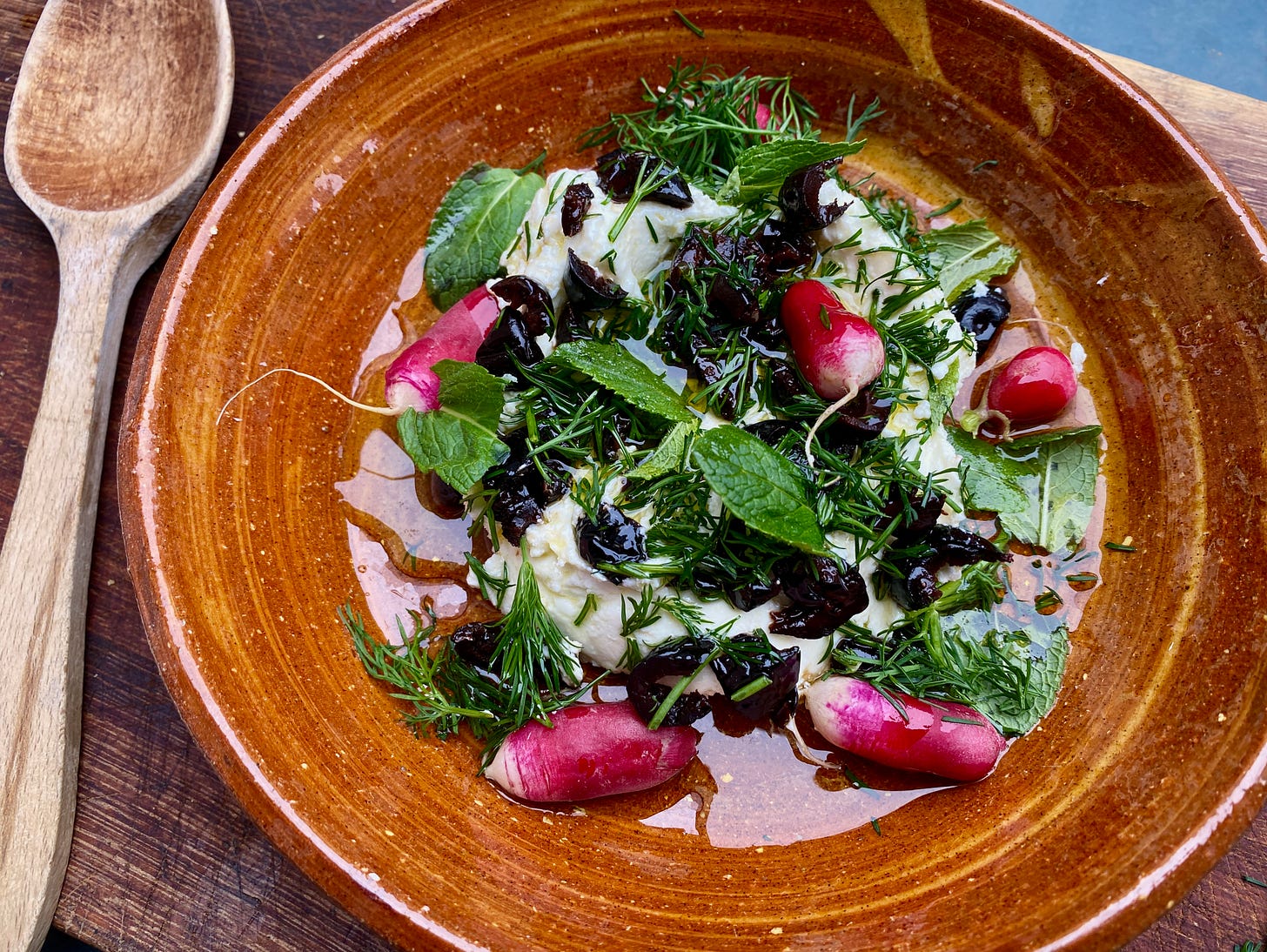

Wonderful, thank you. Have been making labneh for many years and serving it like this - but do not often add feta. Will definitely do so next time. I love the addition of lots of fresh herbs to food. Persian meals ofteninclude a whole platter of simply washed and dried bunches of fresh herbs to be eaten on the plate with the lamb, etc. BTW You are hilarious about the USA and the rejection of the metric system - a source of great amusement elsewhere in the world. I understand that there are only 3 countries that do not use the metric system: USA, Myanmar and Liberia. Interesting assortment. 🤔The question is why would anyone not want a measurement system based on multiples of 10? OH. And who on earth invented the concept of a stick of butter? 😆
I have and use my yogurt strainer. I am reduced to only buying Australian yogurt because after trying it the first time, it's the one I want in my fridge. I will buy Greek yogurt if the Aussie stuff is not showing up in the dairy case. I was taught to make labneh some 45 years ago by my landlady who was taught by her father's upstairs Lebanese tenant, who was probably taught by HER mother going all the way back to Ruth and Naomi but, in this era of long Covid (the effects of which are exacerbated by my old brain), please, David, define terms like "labneh" the first time you use them in an essay. That said, I'll have this ready to go the next time my daughter drives in for a food and gab fest. Thank you. I'd forgotten about Rose's kitchen magic. Did you ever make labneh balls? You just roll the labneh into balls or cut into blocks, and float them in a good olive oil. It's a wonderful schmear!